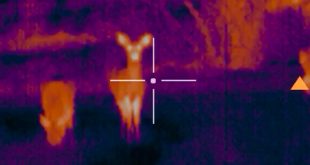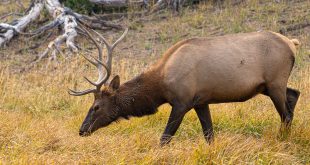
In September, 2018, Eastman’s Official Blog reported on what amounts to the largest mountain goat relocation project in American history in Washington’s Olympic National Park (“ONP”). That project, scheduled to continue through 2020, quite possibly could result in several hundred mountain goats being eradicated if they cannot all be relocated to Washington State’s Cascade Mountains. On the heels of that announcement, officials are now considering the same fate for a growing population of mountain goats in Wyoming’s Grand Tetons based at least in part on the argument that the mountain goats may “possibly” have negative impacts on the native Teton Range bighorn sheep herd.
Public comments on all the proposals are being accepted through January 6, 2019. At this time, the website (https://parkplanning.nps.gov/mountaingoat) for reviewing the proposals and submitting comments is not operable. The National Park Service proposes three alternatives: 1) no action; 2) lethal and non-lethal removal of the mountain goats; and 3) lethal removal of all the mountain goats.
This issue is not new to the Grand Tetons. In 2013-2014 officials began looking at the implications of mountain goats moving into the Grand Tetons and how their presence may impact bighorn populations. In 2014 officials believed that the Grand Tetons could support 250-400 mountain goats if left to their own devices. Rough estimates of the population now indicate about 100 mountain goats call the Grand Tetons home.
The formal position taken by officials is that the herd of mountain goats in the Grand Tetons possibly poses a threat to the native bighorn herds, but those same officials reluctantly admit that while the bighorn population in the area is declining they cannot identify the exact cause of why that is happening.
The Grand Tetons and Olympic National Park mountain goat issues beg some interesting questions. Are we seeing a trend with park and wildlife officials and biologists being too quick to literally pull the trigger on one game species for the benefit of another? If that is the case, we need to slow them down and make sure the science supports such drastic measures. Right now, there appears to be only a “possibility” that the Grand Teton herd of mountain goats is one potential cause of the declining bighorn herd. Of more significance are the domestic animals and human encroachment on the wildlife as a whole. The Grand Teton herd is isolated because of human encroachment, which is causing the competition for resources in the first place.
Also, are we seeing the impact of prior relocation efforts coming back to haunt us? The Grand Teton herd of mountain goats is believed to have started through relocation efforts by the State of Idaho in the 1960s. Obviously, those relocation efforts worked if the population grew to this level.
And are we looking at a situation where we should act now while relocation efforts are manageable? Or do we “wait and see”? Olympic National Park is looking at relocating 750 mountain goats in a three year span. With the amount of information currently available given the year-to-year population counts, the Grand Teton mountain goat herd could explode in the next few years and make lethal removal almost certain. Do we want that?
Nobody likes the thought of declining populations of any game animal, especially one as rare as bighorn sheep. But shooting a mountain goat from a helicopter and leaving the meat to rot is not a very appealing concept, either.
 Eastmans' Official Blog | Mule Deer, Antelope, Elk Hunting and Bowhunting Magazine | Eastmans' Hunting Journals
Eastmans' Official Blog | Mule Deer, Antelope, Elk Hunting and Bowhunting Magazine | Eastmans' Hunting Journals





I read with interest the article of getting rid of the mountain goats in Olympic NP. Ironic that the goats have done well there for nearly 100 years and now some biologist thinks they need to go because they are not native to the park. Now we seeing that the same thing is set to occur in Grand Teton NP. This effort is in response to a declining bighorn sheep population. I see no clear evidence that the goats are creating issues for the sheep but the arrogant biologists are going to get rid of the goats anyway. There are other places that support herds of big horn sheep in the Rocky Mountain Region which unfortunately are experiencing dwindling numbers. May I also point out that there are no goats in the vicinity.
Canadian wolves aren’t native to WY either…..
Why aren’t they issueing permits to hunt these goats I would love to harvest one but thought I could never draw a tag!
Transfer wildlife officials and biologists to a zoo where they can’t do any harm.Oh best feed them so their numbers don’t decline. Management decisions on mountain folk should be over 10 year peroids. Tetons are a big range . There is room for both. biggest problem is over management.
Take the money they would normally use to relocate problem bears, shoot the bear, and use the money to relocate something useful…goats
Historically, domestic sheep have been a serious threat to Bighorn sheep herds. I would look at those risk factors and the large predator explosion (bears and wolves) in this area long before I would even consider eradicating the goats in Grand Teton!
Goats don’t decimate other species like wolves & bears, but they are free to expand their territory. Lets hunt most of the wolves & bears down to a manageable level, so elk, moose & deer populations rebound to historical levels. This will give hunters more opportunities and bring in more money to the area and to the F&G agency. Lets face it, what is more beneficial to local business’s wolves or elk, moose and deer?
This is a very strange situation. I can see both sides of the argument to some degree. These goats did come from the Eastern ID relocation project in the 60s. My dad was guiding in the Tetons for deer when the goats crossed Teton pass highway in the 1970s and have been in the Teton range since. I do find it hard to understand how the goats and sheep compete. Maybe for winter range but there should be plenty of that for both in that range and based on the satellite image plots of the goat locations, most of which are deep inside the park boundary by the way, the sheep seem to live in much different areas than the goats do. How do we know where never were goats there in the first place? Not sure we can believe everything we are told about that. Based on what I have been told by locals that spend a lot of time in those hills, the backcountry skiers are more to blame than anything. They climb and ski right through the wintering sheep during the toughest part of the year in that area. This is very hard on the sheep not to mention the over abundance of cats, and wolves in the area during the rest of the year. It would be a very sad deal to lose this sheep herd however. It is the most isolated bighorn sheep herd in North America from what I have been told. It does look like the state is beginning a plan to hunt these goats hard for 2019. More information will be coming soon on that subject. The G&F has split out the Tetons as its own goat area (Area 4) as a Type A license and what that means, I have no idea. I guess we have to wait and see, also the South Fork of the Shoshone, Greybull River and Wood River drainages in the Cody area are also designated at a Type A hunt. I guess we have to wait and see. -G
I dont really see how the goats could be affecting the bighorn sheep, unless the goats are completely overcrowding the sheep; though they do occasionally share habitat, goats usually live in higher elevation than sheep. And I’m not aware of any diseases that are transmitted between these two animals. I dont think they should just eradicate the goats and leave them to waste, I would say transplant then to other areas; although transplanting them could be very costly and time consuming. I think the park should set a quota and somehow arrange a way for these goats to be harvested by hunters and actually make some money selling tags and generate some more revenue for mountain goat conservation. That would be the ethical thing to do.
The Teton sheep herd is a very unique isolated herd of native not transplanted bighorn sheep. They used to be able to migrate to lower elevations to winter. That is no longer possible and they are wintering on the few windblown areas on the top of the Tetons. The population averaged 120-150 for many years but has declined to 60-85 individuals in two small wintering herds. They are pressured by winter skiers and crowded by goats competing for the available food in the winter. The reestablishment of migration routes is not feasible with the growth of the Jackson hole area. The goats have grown from just 10-20 15 yrs ago to over120 now. They carry at least 2 of the disease pathogens that are associated with bighorn die offs. The effort and time and money spent to disease test and radio collar just a few of these goats was incredible. Averaging 5 times the cost of capturing a Bighorn sheep. The terrain of the Teton range makes the transplanting of goats{ net gunning from a chopper] very dangerous and expensive. Good luck getting the park service to allow hunting and this is an eradication attempt not a sport hunt. Nannies and kids need removed more than billies to control the population. There is no source herd to use to replace the Teton native sheep herd. Their unique wintering adaptation almost guarantees a transplant to replace the herd would fail. If they die off from over competition with the goats or contract the diseases that the goats carry they will be gone for good! I would love to see as many goats as possible transplanted out of this range. I just don’t see it as feasible with the terrain and urgency to save this sheep herd. Tough choice save a one of a kind sheep herd that is available for people to enjoy or do nothing and watch them disappear in the foreseeable future. You may not like the choices offered but that is the choice we have! Non native MT. goats or a native bighorn sheep herd that is non replaceable. The sheep are out of time!
Good points. Counter points are the non native wolves in Yellowstone. What a hypocrisy! Anyway, main take home is that we don’t know what we don’t know and by nature of the management system, for better or worse, we have to trust the biologists to make the best choice. I’m ok with that. They’re as scientific as they can be (not perfect but doing their diligence) and less emionally motivated than activists. That said, if anybody has actually spent any time (even a day), isn’t the terrain more suited to mountain goats? As in way more? What value do the sheep have there? Anyone ever see one? It’s rare if you did. If I had to vote sheep or mountain goat, I’d vote goat. There’s lots of sheep elsewhere and their habitat is more common, but high quality goat country where people can see them amongst their majestic homes is much more much rare. Let the goats take over. The Tetons scream quintessential mountain goat habitat wouldn’t everyone agree???